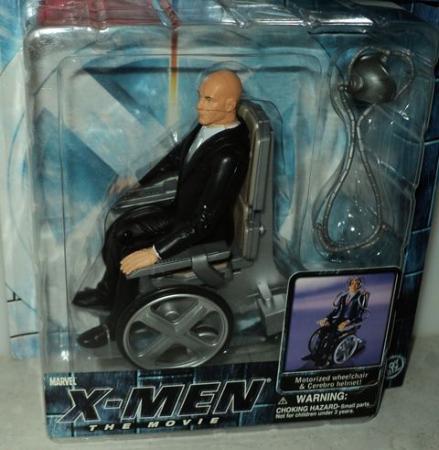When a Court Ruled Whether the X-Men Are Human

For fans of the comic, this struggle over the fate of mutant-kind — relative to us regular humans that is — is core to the saga. But for a company named Toy Biz, Marvel’s toy division, the question was simple. Magneto was right. Mutants aren’t human.
The U.S. government levies tariffs on many imported goods. But there is not one standard tariff rate — instead, different items are taxed at different amounts depending on how the items are classified. For example — relevant to this matter — “dolls” are taxed at 12% while “toys” have a 6.8% levy. The Professor X action figure pictured above — and, for that matter, the rest of the X-Men line — could be considered either, depending on one’s interpretation of the terms “toys” and “dolls.” As Slate noted, The U.S. Customs Service declared them to be “dolls,” which were defined in part as items “representing only human beings and parts and accessories thereof” instead of toys, defined as items “representing animals or other non-human creatures (for example, robots and monsters) and parts and accessories thereof.”
Toy Biz sued. Their claim was simple: Magneto and company were “mutants” and, therefore, “non-human creatures” subject to the 6.8% rate. The government took Professor X’s side, arguing that no, the X-Men were humans like anyone else. The whole thing was ridiculous, except for the fact that the distinction would result in a multi-million dollar difference to both Toy Biz/Mattel and to the U.S. government’s tax coffers, as noted in a RadioLab interview with some attorneys involved.
But the adjudication of the question was not so straightforward — the matter bounced around in the legal system for about a decade. Along the way, a series of laughable arguments came up. Per RadioLab, the criteria for “human” (insofar as Customs is concerned) involved having “a head, a mouth, eyes, nose, hair, arms, torso,” etc. Most of the X-Men have some, but not all, of that. But one — an early victory for Toy Biz/Mattel — had all of those features. That character was Beast, seen here, is the X-Men’s doctor and, per Wikipedia is “a brilliant man of the arts and sciences; he is a world authority on biochemistry and genetics.” The winning argument? As one of the lawyers told RadioLab, Toy Biz asserted “that human beings do not have blue skin.” (Long-time readers of Now I Know will note that this isn’t always true.) In 2003, the court, finally, agreed.
Not everyone was happy, though. USC Annenberg’s Online Journalism Review quoted the proprietor of an X-Men fan site, who called the decision “unthinkable” and argued that the super heroes “are supposed to be as human as you or I.” And the question is now moot — as of the close of 2011, the tariff on toys and dolls is the same.
Bonus fact: In Toy Story, Andy, the child who owned the toys, appears, as does his mother. But his father never does. Why? As one Pixar camera artists explained, “human characters were just hideously expensive and difficult to do in those days and, as Lee mentioned, Andy’s dad wasn’t necessary for the story.”
From the Archives: Turkey and Chickens: Another tariff workaround.
Related: A Professor X doll… er, toy.

Leave a comment